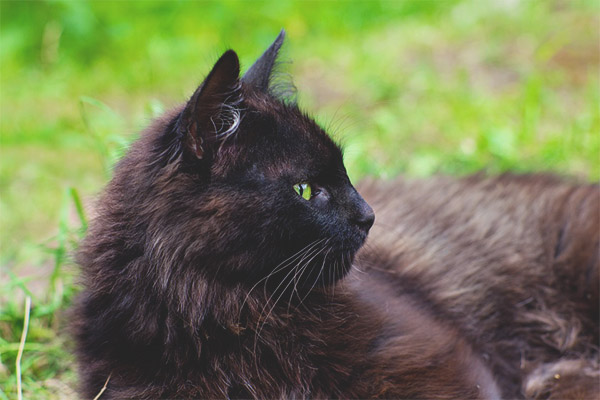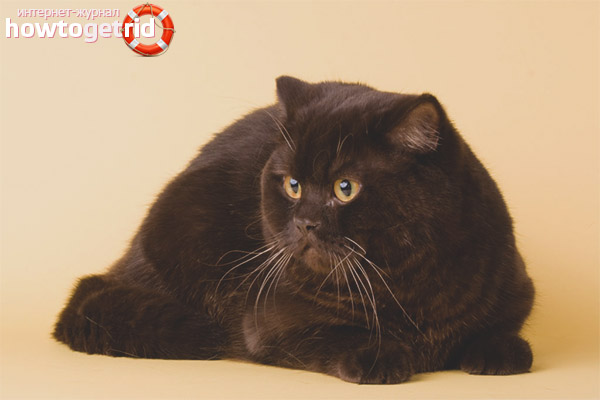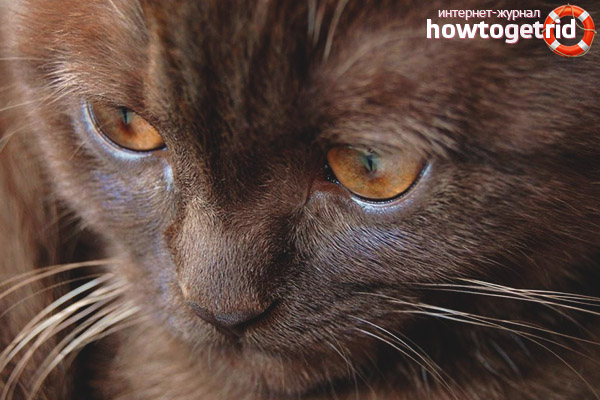The content of the article
York chocolate cats are just perfect pets for a family with children. She is a beautiful little girl with a cheerful disposition, extremely friendly to all human friends and animals. They are in good health and do not require complex care.
From the history of the breed
York cats were first bred in New York nearly 25 years ago, it happened randomly. In the American family was homeless mongrel pussy. Once she had kittens, and among them was a very beautiful cat, which has a very fluffy and thick fur coat, an intense chocolate color. Soon this cute creature grew up, and she also had a kitten with the same characteristics.
The unique color is extremely liked the owner, who decided to start breeding this new breed.Despite the fact that she was not experienced in breeding, she did it all. The hostess was engaged in viscous offspring among themselves, and this allowed us to get a stable "chocolate" gene.
This breed of cats appeared not so long ago, therefore it was also recognized quite recently. She was registered officially in the 83rd year, and her popularity began to gain momentum with success. Today, these cats are a success in Canada, New York and European countries.
Description of breed standards
Representatives of the York chocolate breed of cats should have the following external characteristics:
- Torso Long, with well developed muscles. It measures slightly larger than average. The bones are light.
- Tail. With a wide base. Medium, or longer than average. With a round tip.
- Neck. Must be long and thin.
- Paws. Differing in length and slimness. Rear longer than the front. The tips of the paws are oval. Characterized by the presence of tufts of hair between the fingers.
- Head. It has a round shape. The average size. The muzzle is wedge-shaped.
- Eyes. Oval shape. Medium size. Harmoniously combined with the shape of the head.
- Ears. Large and rounded at the tips. On the inside there are tufts of wool.
- Wool. York cats have a very soft and silky coat. It is quite long, while it is thin with a slight glossy sheen. The presence of a thick undercoat is characteristic. In the shoulder area the hair is shorter and towards the tail it gradually becomes longer. Some individuals have a characteristic "collar" in the neck.
- Colors. Chocolate, purple, a combination of chocolate with white, a combination of purple and white. Kittens up to one and a half years old can have colors like tabbies or tipping.
Attention! One white spot, on condition of uniform color, is a disadvantage.
In adulthood, the York cat should be painted in the correct chocolate or purple hues. The presence of bands or impurities of foreign flowers to the mature age should not be.
Adult cats of this breed have a weight of up to 8 pounds. The elongated and muscular body allows these animals to have a soft and graceful gait. York cats have stunning appearance, cheerful and sociable disposition, are very active, respond well to training.
They love their owners and younger members of the family. That is why the representatives of this breed are in demand as pets for large families with children. They are kind and curious, but they cannot be called intrusive.
Character traits
Looking at the photos of chocolate cats, it is impossible to break away. Unfortunately, the pictures do not know how to convey the main merit of these pets - their character. In this case, they are soft and fluffy, not only externally, but also inside. They are able to become the most loyal friends, besides, for all members of the family in the house with which they live.
The York cat is never aggressive and angry, rather, on the contrary, they are extremely tidy and tolerant, sensitive as far as they see the first changes in the inner world of their owner.
Cats of this breed respond well to training. But without him, they are very neat and educated. Culture is their innate gift. When they live with people for a long time, they are understood not only by the intonation of their voice, but they also know exactly the meaning of the set of words.
These pets are very playful and with great joy chase a jingle ball or pursue toy mice. When the owner rests, they will not bother him, but simply can lie down side by side or hide in his house. However, for a long time this cat will not leave to leave. They need to be in the community and feel the care of the owner. When left alone, they feel abandoned and may even be under stress. These intelligent and intelligent animals will do everything to get their deserved attention.
With other brothers smaller York cats behave very carefully. But in the end, thanks to their calm nature, they perfectly find a common language and do not enter into conflicts.
Aliens at first can cause some discomfort in cats of this breed. They prefer to assess the situation from the most hidden corner of the room and after some time, when they are convinced that the novice is not dangerous, they can come into contact with him and even make a company next to him on the couch.
Attention! York chocolate cats need early socialization.Having accustomed a pet to the society of people and other animals from a young age of a kitten, there is no doubt in its ability to find a common language with everyone.
Cats of this breed are very convenient for keeping in any sense. They differ appeasability, playfulness and comparative unobtrusiveness. Their positive attitude and confidence in the owners becomes the key to a long and happy friendship. Each family member perceives this creature in a special way, without presenting his own life without him. Cats of this breed are not the ones that “walk by themselves”, they are strongly attached to their owner, despite the calm and phlegmatic nature. And they may suffer due to the lack of proper attention to their own persona.
Attention! The best option for living a cat of the York breed is a large family, where they can get their due share of attention and not feel lonely.
Maintenance and care
The maintenance of cats of this breed and features of care for them does not require special skills and knowledge. They are as simple as the character of these pets.
- Care of the coat. The Yorks have a long and thick with undercoat wool.It is necessary to comb such a cat at least 2 times a week, and every day during periods of molting, so that furniture and clothes do not collect excess cat fluff on themselves.
- It is necessary to bathe a pet no more often than once in 4 months. And it is better not to do this without special need, because water treatments violate the condition of the skin of cats, which has a special protective fat layer.
- Walking is obligatory not only for people, but also for animals, cats, including. In terms of living in the private sector, the pet can walk on its own. Best of all, when the plot has a high (from 1.5 m), in no case is not a wooden fence. A kind and trusting animal can easily become prey for dogs or cruel people. For walking the York cat living in the apartment, it is advisable to use a leash.
- Feeding. To feed the cat you need high-quality food. Without this in any way. She should have two separate bowls, for water and for food. With a combined diet: dry food and natural food, there should be 3 separate bowls, in 2 of which there should be food, and in the 3rd - clean water to drink.
- Brushing your ears and teeth. Mandatory procedures that will help keep the cat healthy and attractive.Ears should be cleaned with cotton buds, slightly moistened in barely warm boiled water. Cats are cleaned with special toothpastes using a cotton pad or a children's toothbrush. It is necessary to accustom a kitten to hygienic procedures from an early age, then they will not bring him inconvenience in adulthood.
As a rule, York cats do not suffer from genetic diseases. Chronic diseases also occur extremely rarely. These animals have good health and good immunity.
Video: York chocolate cat













To send